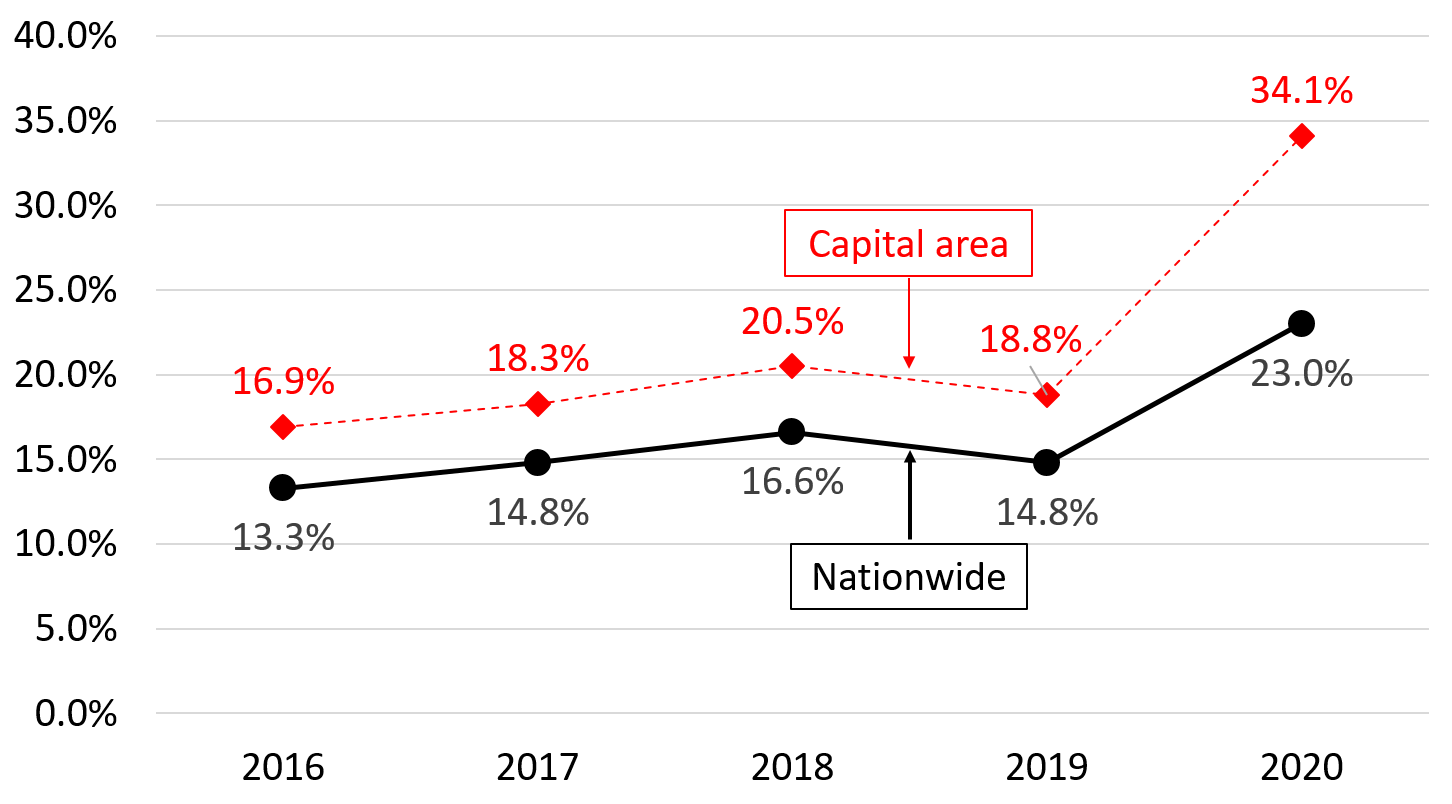Column Finance and the Social Security System 2021.05.18
【Aging, safety net and fiscal crisis in Japan】No.308:The percentage of teleworkers has exceeded the government target due to COVID-19
In this column series, Yukihiro Matsuyama, Research Director at CIGS introduces the latest information about aging, safety net and fiscal crisis in Japan with data of international comparison
The Ministry of Land, Infrastructure, Transport and Tourism released the results of a survey on teleworkers in 2020. As shown in Table 1, the Ministry classifies teleworkers into three types: those that are employed within a program, those that are employed without a program, and those that are self-employed. In 2017, the government set a goal of increasing the percentage of teleworkers employed by employers with telework programs from 7.7% in 2016 to more than 15.4% by 2020. In practice, the target has exceeded due to the COVID-19 pandemic, rising from 9.8% in 2019 to 19.7% in 2020.
Table 1 Classification of teleworkers by employment type

(Source) Ministry of Land, Infrastructure, Transport and Tourism
Figure 1 Percentage of teleworkers with employers that have telework programs

(Source) Ministry of Land, Infrastructure, Transport and Tourism
The driving force behind the achievement of this goal was the increase in the capital area, which consisted of Tokyo, Kanagawa, Saitama, and Chiba prefectures. Figure 2 shows the percentage of employed teleworkers (i.e., the combination of ① and ② in Table 1) compared to the total number of employees. In the capital area, this percentage increased from 18.8% in 2019 to 34.1% in 2020. The reason why this figure increased significantly more than that in other areas is that there have been more COVID-19 infections in this area and commuting time is generally longer, so the benefits of teleworking are greater.
Figure 2 Percentage of teleworkers compared to the total number of employees

(Source) Ministry of Land, Infrastructure, Transport and Tourism
